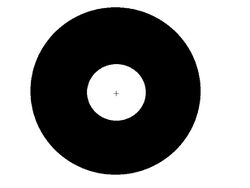Philosophy:Emmert experiment
The Emmert experiment is a perceptual experiment by psychologist Emil Emmert (1844–1911). The experiment is based on the size constancy.
Principles
Besides localization and recognition, there is another function of our sensory system: the size of the objects remain constant in spite of the changes of the image perceived our retina. Thanks to evolution we experience the objects as they really are and not as our eyes perceives them. We usually perceive object as being relatively constant, irrespective of the light conditions, our point of view or the distance between the object and us.
Our cars do not seem to be bigger even if we are approaching them, their form do not become more distorted, their colour does not change even if we apply artificial lighting. This phenomenon is called perceptual constancy.
The most studied constancy is the size constancy, or the phenomenon as when we perceive the constant size of the objects independently to their distance. As an object moves farther away, their perceived size usually does not decrease as we are looking at them.
Example
Hold a coin in front of you, 30 centimeters away from you and then move it at arm’s length. Does the coin seem smaller? Obviously not, but the size of the retinal image of the coin is two times bigger than the retinal image of the coin when it was 30 centimeters away.
In the Emmert experiment, we keep a book in front of us within normal reading distance, with good light conditions. Fixate our look into the middle of the object for 1 minute and look to a wall further away. We can see the post-images of the two circles that seem to be bigger than the stimulus. Now let’s look at a paper close to our eyes. The post-image is smaller than the stimulus. If the post-image disappears it can be restored by blinking.
References
- Bonnet, C., & Pouthas, V. (1972). Apparent size and duration of a movement after-effect: The Quarterly Journal of Experimental Psychology
- Dwyer, J., Ashton, R., & Broerse, J. (1990). Emmert's law in the Ames room: Perception
- Epstein W, Park J, Casey A. (1961) The current status of the size-distance hypotheses. Psychological Bulletin, 58: 491-514.
- Makosky, V. P., Whittemore, L. G., & Rogers, A. M. (1987). Activities handbook for the teaching of psychology
- Fisher, G. H. (1968). Illusions and Size-Constancy: American Journal of Psychology


